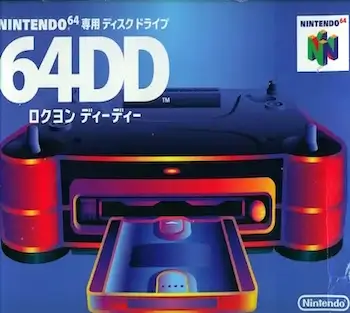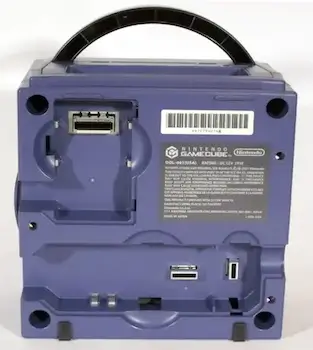These days, game systems come with all kinds of auxiliary ports---USB, HDMI, Ethernet, Optical Audio, and more. These gaming technology advancements are used for logging in online, connecting digital cameras, and everything in between.
In the retro gaming days of the '80s and '90s, getting a port for your console was rare. Most consoles only had one basic connection, called the "expansion port."
Quick Takeaways: What Did Nintendo’s Expansion Ports Actually Do?
✅ Most NES and N64 expansion ports went unused in North America—no major accessories were ever released for them.
✅ The bottom N64 port was only useful in Japan, supporting the short-lived N64DD Disk Drive.
✅ The SNES port powered rare Japan-only gear like the Satellaview modem and an exercise bike.
✅ GameCube finally delivered real expansion with Game Boy Player and LAN support.
✅ The Wii ditched mystery ports in favor of modern, accessible USB and SD card slots.
Typically, these were used to connect special hardware accessories and to expand gameplay.
Or were they really? Interestingly, not all these retro console connections were that functional.
- Case in point: look under your old Nintendo NES and Nintendo 64 systems. There, you'll find the 48-pin expansion ports, each hidden behind a snap-in case.
- Kids who discovered these in the '80s were clearly mind-blown. What could they possibly be for?
- Maybe they're for some cool NES add-ons, like a new light gun or a different controller. But no one we knew during childhood ever found out.
- So, let's put the rumors to rest once and for all. Here's a definitive look at what those bottom expansion ports under your NES and N64 actually do.
The Table of Contents
The Nintendo NES Expansion Port: Understanding Accessories for Retro Consoles
“Seriously, what is it for? Is it for rare but amazing Nintendo accessories that will change my life forever? Does it connect modems, games from other systems, or an unlimited number of controllers?”
forever? Does it connect modems, games from other systems, or an unlimited number of controllers?”
The Mystery Unveiled: The NES Expansion Port Does... Nothing
There is no end to the rumors and speculation surrounding the NES expansion port. One common rumor held that the port was compatible with Sega Master System games.
Unfortunately, that's not the case. To that point, don’t attempt to cram cords, games, and adapters from other systems into this expansion port.
- Alright, so what's the actual purpose?
- Nothing. We’re so sorry, it does absolutely nothing.
Are You Freaking Kidding Me? The Truth About NES Peripherals
The awful truth is that nothing was ever developed for the nes expansion port so, in point of fact, it actually does nothing. From the start, it was just an obsolete leftover from the Famicom system.
The Truth Behind Famicom System Peripherals
- In the original Famicom system, the controllers were permanently attached, hardwired to the console. The NES expansion port was just a way to connect extra controllers. Not so in America.
- Debunking the Myths: of using some cool third-arty Accessories on your Nintendo NES.
- There were other rumors that the nes expansion port was used to connect the Nintendo NES to the Famicom console. But this seems to be a red herring as well.
Historical Gaming Rumors: What You Need to Know
- There was also hearsay that Nintendo would use it to connect a modem developed by Teleplay, but that’s a dead end as well. True enough, there were plans to develop this technology. But the modem never got beyond the prototype stage.
Obsolete Gaming Technology: Why the NES Expansion Port Does Nothing
Ironically, though, the folks at hackster reported on a hobbyist who got some internet mileage out of the expansion port. In 2024, he modified the port to send tweets from his NES.
- It seemed to be a time-consuming project that cost at least some amount of money.
- But realistically, it’s easier to just tweet from your phone.
- There have also been reports that many gamers in the 80s and 90s use the NES expansion port as a hiding spot for joints.
The N64 Expansion Port: Boosting Gameplay with Gaming Technology
Most retro console gaming enthusiasts know that the N64 console comes equipped with a useful memory expansion port on the top of the machine.
memory expansion port on the top of the machine.
Like any other memory expansion feature, this n64 expansion port is used to boost the system’s RAM.
This speeds up certain game features and decreases lag when there’s a lot of in-game action happening all at once.
Some Nintendo 64 games, like Donkey Kong 64, require a memory expansion pack in order to run. You already knew all of this, didn't you?
What About the N64 Expansion Port? Exploring Compatibility with N64DD(Nintendo 64 Disk Drive)
- It’s here, that you’re truly stumped. What is the N64 expansion port on the bottom of the Nintendo 64 Console?
- This time around, Nintendo must have added an expansion port that actually does something, right? … We hesitate to say.
- More Memory, Controllers, Accessories, or Drive Space For Save Files?
- To answer these queries, no, no, no, and no. And unless your next question has to do with Japan, no.
Made in Japan, For Japan: The Legacy of Famicom Expansion
Yet again, this oddly enticing the N64 expansion port was only relevant in Japan. The n64 bottom expansion port was compatible with the N64DD (Nintendo 64 Disk Drive), a Japan-only drive for reading CD-ROM games.
- The N64DD (Nintendo 64 Disk Drive) was a peripheral developed by Nintendo for the Nintendo 64 that allowed the console to read data from a magnetic disk format.
- The N64DD (Nintendo 64 Disk Drive) was released only in Japan in 1999. It was made to increase the N64's abilities.
 It offered more storage for bigger games, better graphics, and downloadable content.
It offered more storage for bigger games, better graphics, and downloadable content.
N64DD (Nintendo 64 Disk Drive) Disk Format: Understanding Its Unique Technology and Limited Success
The N64DD (Nintendo 64 Disk Drive) used a unique disk format that stored data on disks similar to floppy disks.
This system was designed to help developers make bigger and more complex games than what standard cartridges could handle.
Despite having a few games made just for the N64DD (Nintendo 64 Disk Drive), the accessory didn't do well.
It was released too late, and CD-ROM technology was becoming more popular in gaming.
Notably, the N64DD (Nintendo 64 Disk Drive) included several games such as:
- "The Legend of Zelda: Ocarina of Time" expansion (known as "Ocarina of Time: Master Quest")
- "F-Zero X Expansion Kit."
But nothing ever happened for these expansions.
Gamers in the far east could connect their consoles to a portable disc drive, but the project was canceled before it was released worldwide. For the second time, this Nintendo expansion port does basically nothing in North America—no peripherals, no modem, no nothing.
The Super Nintendo Expansion Port: More Than Just a Modem
Ok, we lied. The N64 was Nintendo’s third incarnation of a Japan-relevant, North-America-useless expansion port. The second was the Super Nintendo expansion port.
The only apparent uses for this expansion port are a crazy-awesome modem that allows online play and a freaking exercise bike. The modem, Satellaview, featured 114 games that we’ll never get to play.
play and a freaking exercise bike. The modem, Satellaview, featured 114 games that we’ll never get to play.
The Super Famicom Exercise Bike: A Unique Peripheral for Active Gaming
- The Super Nintendo exercise bike, officially known as the "Super Famicom Exercise Bike."
- Which was a unique peripheral that allowed users to play games while exercising.
- Developed for the Japanese Super Famicom system, this exercise bike featured pedals that could be used to control in-game actions.
Unfortunately, these functionalities were never made available outside Japan, making the Super Nintendo expansion port largely irrelevant for North American users.
The GameCube Expansion Port: Real Expansion Possibilities in Retro Gaming
The Nintendo GameCube was released in 2001. This was the first system from the company that offered real expansion features. The GameCube featured three ports: two serial ports and one high-speed port, offering various options for enhancing gameplay and connecting accessories.
high-speed port, offering various options for enhancing gameplay and connecting accessories.
- One notable gaming peripheral was the Game Boy Player, which connected to the bottom expansion port of the GameCube.
- This accessory let players play Game Boy Advance games on their TVs. It offered a new way to enjoy handheld games like a home console.
- Despite these expansion options being available globally, one of the serial ports (the smaller one) ultimately remained unused, showcasing Nintendo's tendency to leave potential untapped.
GameCube Expansion Ports: Enhancing Gameplay with Versatile Attachments
Fortunately, the other ports got some use here in ‘America. The most notable was the Game Boy Player attachment, which we mentioned above.
- The larger of the serial ports allows online play through a LAN adapter.
- One notable title that supports this feature is Mario Kart: Double Dash! Technically, this feature isn’t discontinued.
- Although, today, you’ll have a hard time finding other players and getting the connection to work.
Nintendo Wii Expansion Ports? Embracing Universal Connectivity in Console History
Breaking away from the complex designs of previous consoles, the Wii opted for simplicity with just an SD card slot and two USB ports. This change showed that Nintendo wanted to connect players more easily. They focused on giving players useful options instead of complicated ports.
- The SD card slot made it simple to add more storage.
- This way, users could save their game data and download extra content from the Wii Shop Channel.
- The two USB ports allowed you to connect different devices.
- You could use external hard drives, LAN adapters for better internet, or USB microphones for karaoke games.
The Wii focused on useful features and a simple design, making it popular with many people, including families and those interested in casual gaming.
This focus on accessibility set a new standard for gaming consoles, demonstrating Nintendo's flexibility in an ever-changing gaming landscape.
The Conclusion
In conclusion, the journey of Nintendo's expansion ports has revealed a history filled with untapped potential.
While these connections interested gamers, like the NES and N64 expansion ports, not many useful accessories were made. What began as innovative ideas often ended up as concepts left unrealized.
However, Nintendo's transition to universal connectivity with the Wii marked a significant evolution in gaming design. By focusing on useful features like SD card slots and USB ports, Nintendo created a new standard for easy-to-use gaming.
The history of Nintendo's expansion ports shows how gaming technology has changed over time. It also shows how Nintendo has adjusted to meet what today’s players want.
Share Your Thoughts!
We would like to hear from you! What are your experiences with Nintendo expansion ports? Did you ever find a peripheral that actually worked? Or did you, like many of us, wonder what those ports were for all along?
Share your stories or any cool memories from your retro gaming days in the comments below!
If you enjoyed this article, don't forget to share it with your fellow gamers and friends! And for more fun and insightful discussions about classic gaming and nostalgia, make sure to subscribe to our newsletter!
Expert Thoughts on Nintendo Expansion Ports
“Nintendo’s various expansion ports were often underused, but they reveal how forward-thinking the company was in terms of hardware design—even if many of these features never saw widespread use.”
— Source: Nintendo World Report – Nintendo’s Expansion Ports
“The NES expansion port was a mystery to most players in the U.S., but it’s cool to see how people are still finding creative ways to use it decades later.”
— Source: Reddit – Finally a use for the NES expansion port (r/nes)
“The slot on the bottom of the NES is an expansion port originally intended for peripheral devices and possible online connectivity. While never utilized in North America, it was a forward-thinking feature that hinted at future gaming tech.”
— Source: NCESC – What is the Slot on the Bottom of the NES?
“I never realized the NES expansion port had much of a purpose until I started researching and writing this article. It’s one of those hidden pieces of gaming history that really surprised me.”
— Brandon Perton - Owner of The Old School Game Vault
FAQ's About Nintendo Expansion Ports
What are Nintendo expansion ports used for?
- Nintendo expansion ports were originally designed to connect peripherals that could enhance gameplay experiences on their consoles.
- Many ports, like those on the NES and N64, were rarely used and didn’t support widely adopted accessories.
What is the purpose of the NES expansion port?
- The NES expansion port was intended to support accessories and peripherals.
- In reality, it turned out to be mostly unused, as no major products were ever released to make meaningful use of it.
Do the N64 expansion ports do anything?
- The top N64 expansion port is used for memory upgrades, like the Expansion Pak.
- The bottom expansion port was compatible with the N64DD, an accessory released only in Japan.
- The N64DD offered expanded game content but was never released globally.
Why did Nintendo include expansion ports?
- Nintendo added expansion ports to allow for future hardware upgrades and new accessory support.
- However, many of the planned peripherals were never completed or released, leading to confusion and underuse of the ports.
How did the Wii change Nintendo's approach to expansion ports?
- The Wii simplified connectivity by removing legacy expansion ports and instead offering more modern options.
- It featured an SD card slot and two USB ports, making it easier and more user-friendly for a broader audience.
About us: Sell Old Video Games with Us - The Old School Game Vault
If you're new to our website, here at The Old School Game Vault we buy and sell retro video games.
We offer high video game trade in value for your old video games and gaming systems.
Just type in what you have in the search bar on our site, and get an instant trade in price for your items.
We provide instant price quotes for Nintendo 64 and Nintendo NES game collections, making it easy to find out where to sell Nintendo 64 games quickly and efficiently.








